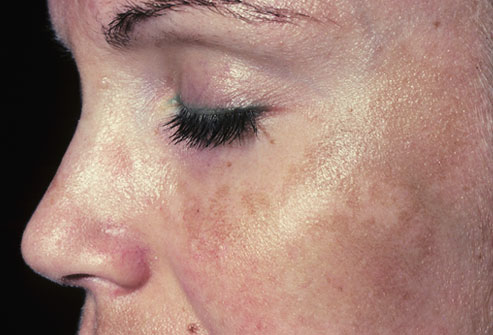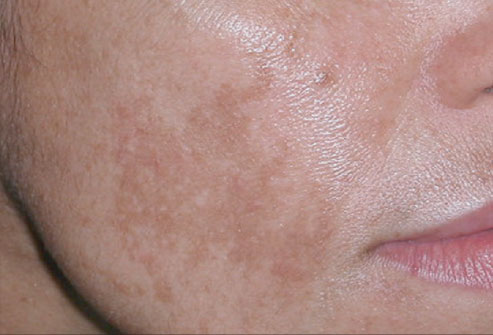What is Melasma?
 Melasma is a facial skin condition that presents with blotchy areas of hyperpigmentation distributed primarily over the forehead, cheeks upper lip and less commonly the forearm. The exact cause of melasma is unknown however it is believed that the pigment producing cells known as melanocytes, become over active producing more melanin in selective locations.
Melasma is a facial skin condition that presents with blotchy areas of hyperpigmentation distributed primarily over the forehead, cheeks upper lip and less commonly the forearm. The exact cause of melasma is unknown however it is believed that the pigment producing cells known as melanocytes, become over active producing more melanin in selective locations.
Who gets melasma?
Women are affected by melamsa more commonly than men. It tends to affect individuals with darker skin types. Those of Latin American, African American, Asian, Indian and Middle Eastern descent are more predisposed to the development of melasma than those of European ancestry.
What are the triggers?
- Sun exposure: Ultraviolet (UV) light stimulates melanocytes. The smallest amount of UV exposure may cause melasma to recur after fading which explains why the pigmentation of melasma worsens in summer.
- Hormonal influences: Pregnant women often develop melasma. Birth control pills and hormone replacement medicine may also trigger melasma.
- Cosmetics: Skin care products that irritate the skin may worsen melasma.
Diagnosis of Melasma
 Melasma is diagnosed by your dermatologist with a thorough history and physical examination. A specialized UV lamp known as a Wood’s lamp may be used by the dermatologist to accentuate differences in pigmentation and sun damaged skin.
Melasma is diagnosed by your dermatologist with a thorough history and physical examination. A specialized UV lamp known as a Wood’s lamp may be used by the dermatologist to accentuate differences in pigmentation and sun damaged skin.
Treatment of Melasma
- Avoid Sun Exposure – even small amounts uv exposure will stimulate additional melanin production. Select broad spectrum sunscreens preferably with physical blocking agents containing zinc oxide and titanium dioxide. The higher the sun protective factor, the better. Wear wide brimmed hats and seek the shade of trees or umbrellas.
- Topical preparations containing kojic, glycolic, azeleic, retinoid or mandelic acids can be provided by your dermatologist in specific formulations to help fade hyperpigmentation and maintain clearance once improved.
- Chemical peels and selective laser therapies are adjunctive in-office procedures that may be necessary to jump start or accelerate the clearance of difficult to treat melasma cases.

